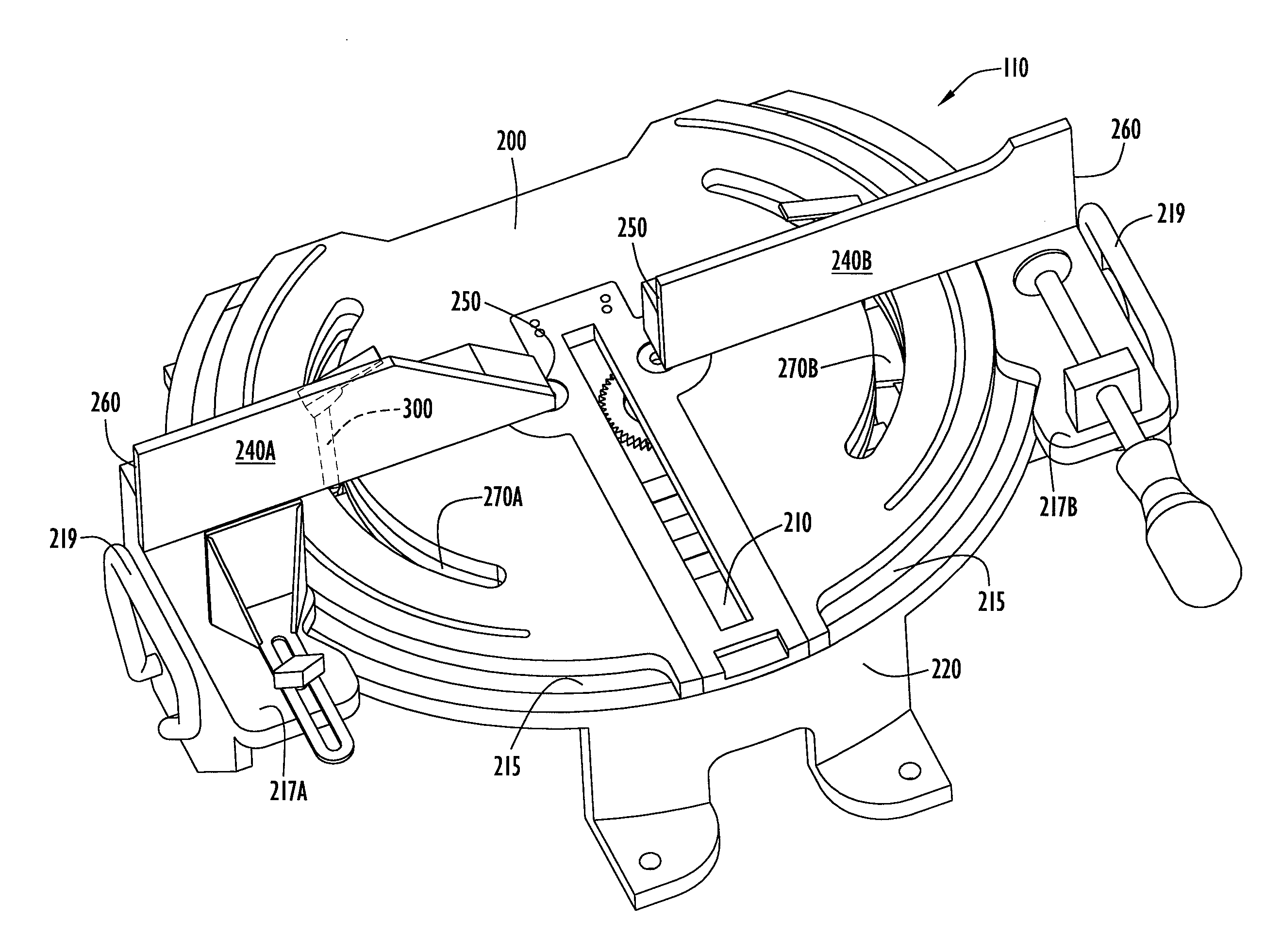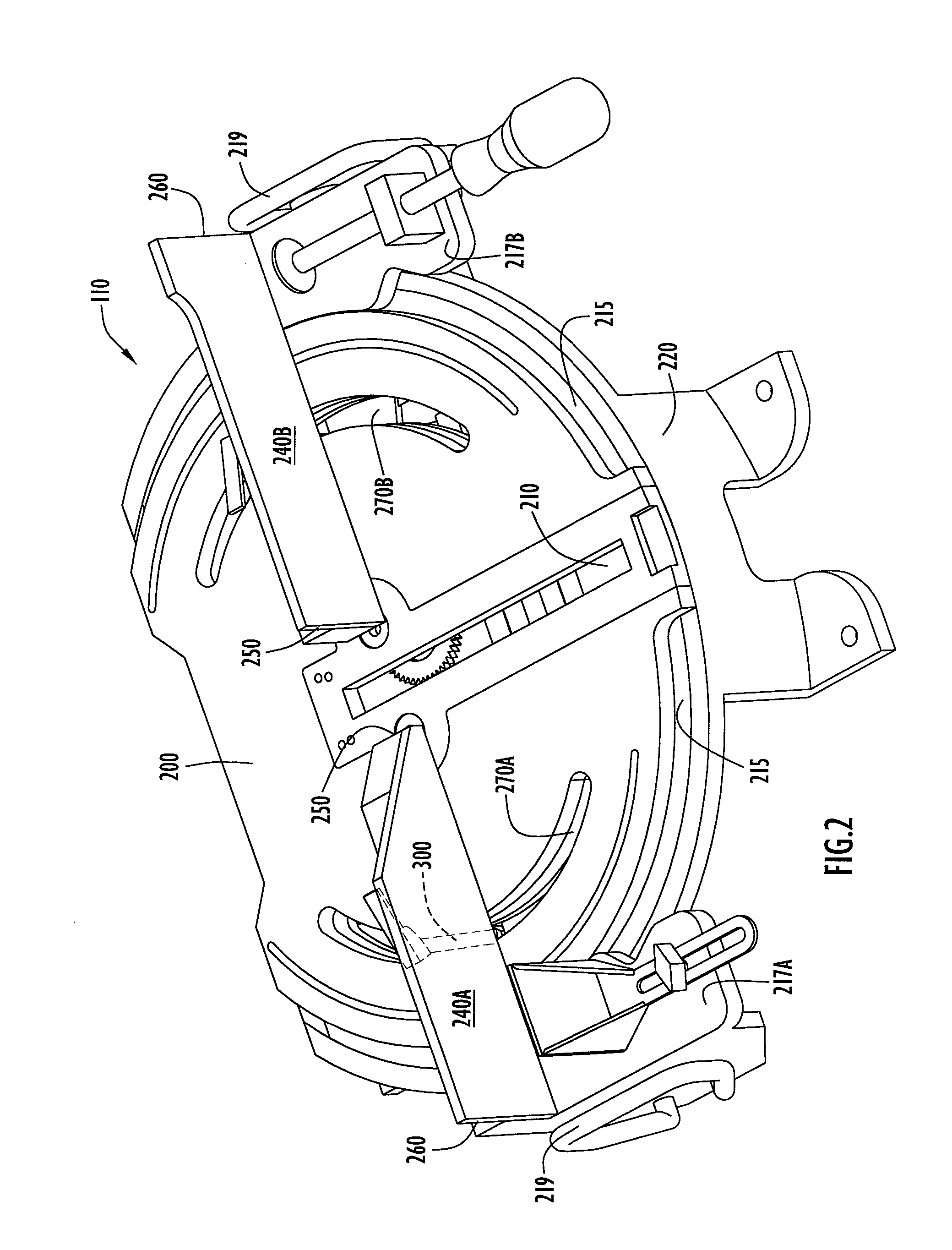System for Forming a Miter Joint
a technology of system and miter joint, which is applied in the field of system for forming miter joints, can solve the problems of inability to create proper corner joints, often not perfect right angles, and easy to be confused with the direction of the original design,
- Summary
- Abstract
- Description
- Claims
- Application Information
AI Technical Summary
Benefits of technology
Problems solved by technology
Method used
Image
Examples
Embodiment Construction
[0023]FIG. 1 is a perspective view of the system for forming a miter joint in accordance with an embodiment of the present invention. As illustrated, the system for forming a miter joint 100 may include a base station 110 with a cutting device 120, and a measurement tool 130 (also called an angle gauge) that removably couples to the base station.
[0024]The cutting device 120 may include any device operable to cut a workpiece WP (e.g., wood, aluminum, crown molding, etc). By way of example, the cutting device 120 may include manual and powered saws including, but not limited to, hand saws, chop saws, drop saws, miter saws, sliding saws, etc. The cutting device 120 may be separate from the base station 110, or may be coupled thereto. In the embodiment shown in FIG. 1, the cutting device 120 is a drop / chop saw (with a rotating circular saw blade) coupled to the base station 110 using fasteners. Typically, the cutting device 120 is fixed to the base station 110 such that the miter angle ...
PUM
| Property | Measurement | Unit |
|---|---|---|
| cutting angle | aaaaa | aaaaa |
| angles | aaaaa | aaaaa |
| angles | aaaaa | aaaaa |
Abstract
Description
Claims
Application Information
 Login to View More
Login to View More - R&D
- Intellectual Property
- Life Sciences
- Materials
- Tech Scout
- Unparalleled Data Quality
- Higher Quality Content
- 60% Fewer Hallucinations
Browse by: Latest US Patents, China's latest patents, Technical Efficacy Thesaurus, Application Domain, Technology Topic, Popular Technical Reports.
© 2025 PatSnap. All rights reserved.Legal|Privacy policy|Modern Slavery Act Transparency Statement|Sitemap|About US| Contact US: help@patsnap.com



